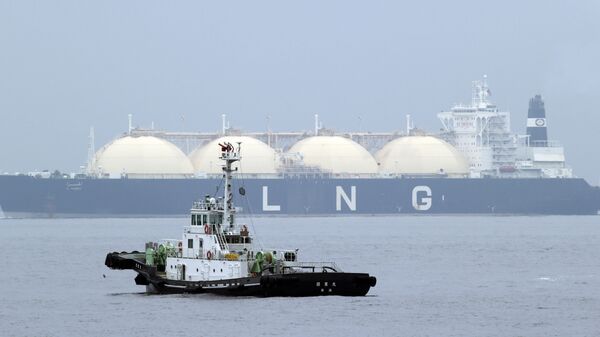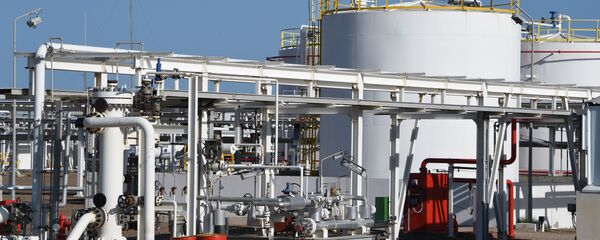According to S&P Global Platts, in November, the US exported an average of 210 million cubic meters of gas a day and imported 198 million cubic meters.
This is a result of the domestic gas production boom which will significantly reshape the global energy market, according to The Wall Street Journal.
Since 2010, the US has increased gas exports by more than 50 percent. In particular, the energy boom was prompted last year by the removal of a half-a-century long embargo on crude exports.
According to WSJ, foreign producers are now facing growing competition from the US energy industry. American energy firms are making aggressive attempts to increase their share in the global market to help compensate a long period of low prices.
"It’s indicative of things to come," Sid Perkins, managing partner at the brokerage Ion Energy Group, told WSJ. Natural gas is "going to be taking on the characteristics of a global-macro market, like crude, where global factors will influence what happens to gas."
According to Perkins, demand for natural gas in the US may increase due to cooling and the country will again become a net importer of natural gas.
However, he underscored that the increase in US gas exports is a positive step for the American energy industry amid the oversupply in the domestic market.
The Wolfcamp formation, in the Permian Basin in a West Texas desert, is believed to hold some 20 billion barrels of oil, worth roughly $900 billion at today's prices. It is also believed that this field contains an estimated 16-trillion cubic feet of natural gas, and 1.6 billion barrels of liquid natural gas.
However, Russia was skeptical about the Texas discovery.
"How can they say this is a an oilfield? This is just the potential reserves," said Russia's Minister of Natural Resources and Environment Sergei Donskoi.
Many analysts echoed this skepticism.
"This is not an oilfield. This is just reserves and they are not confirmed yet," said Sergei Pikin, director of the Fund for Energy Development.
The situation in the global crude market is so uncertain that the majority of analysts refrain from outlooks. At the same time, the situation in the global gas market is now changing and competition is increasing.
"The US is gradually increasing LNG shipments and entering new markets. The Americans have entered the European market. Possibly, the US will sign a five-year contract on gas shipment to the European Union," Pikin told RIA Novosti.
By 2020, the US plans to deliver nearly 80 billion cubic meters of LNG to the global market.
"In fact, the US will deliver less than 80 billion cubic meters to the market. Nevertheless, this is an emerging threat to Russia both in the European market and in the Asia-Pacific region," Nesterov said.
Currently, the global LNG market is overheated and prices have significantly dropped.
"Previously, $400-450 per 1,000 cubic meters of LNG was normal in Europe. Sometimes, prices even reached $500. Now, it dropped up to three times. Gazprom sells LNG to some partners for $150," Pikin noted.
The expert underscored the difference between the crude and LNG markets. The Organization of Petroleum Exporting Countries (OPEC) usually tries to regulate the oil market. As for the LNG market, each producer is independent and can maximize production.
"As for now, Russia keeps its market share in Europe. An increase in competition does not mean that Russia will lose," Pikin said.
According to him, Gazprom is still able to meet competition.
"Amid an increase in global competition, the company should follow the basic rules of the market, including setting attractive prices, guarantees of deliveries and comfortable terms for partners in the long-run," Pikin said.
However, Nesterov underscored that in the mid-run American companies are likely to give Gazprom a run for their money.
"Russia will respond. If it is necessary a price war is likely in Europe. In the long-run, Gazprom will have a tough competitor in Europe," he concluded.








